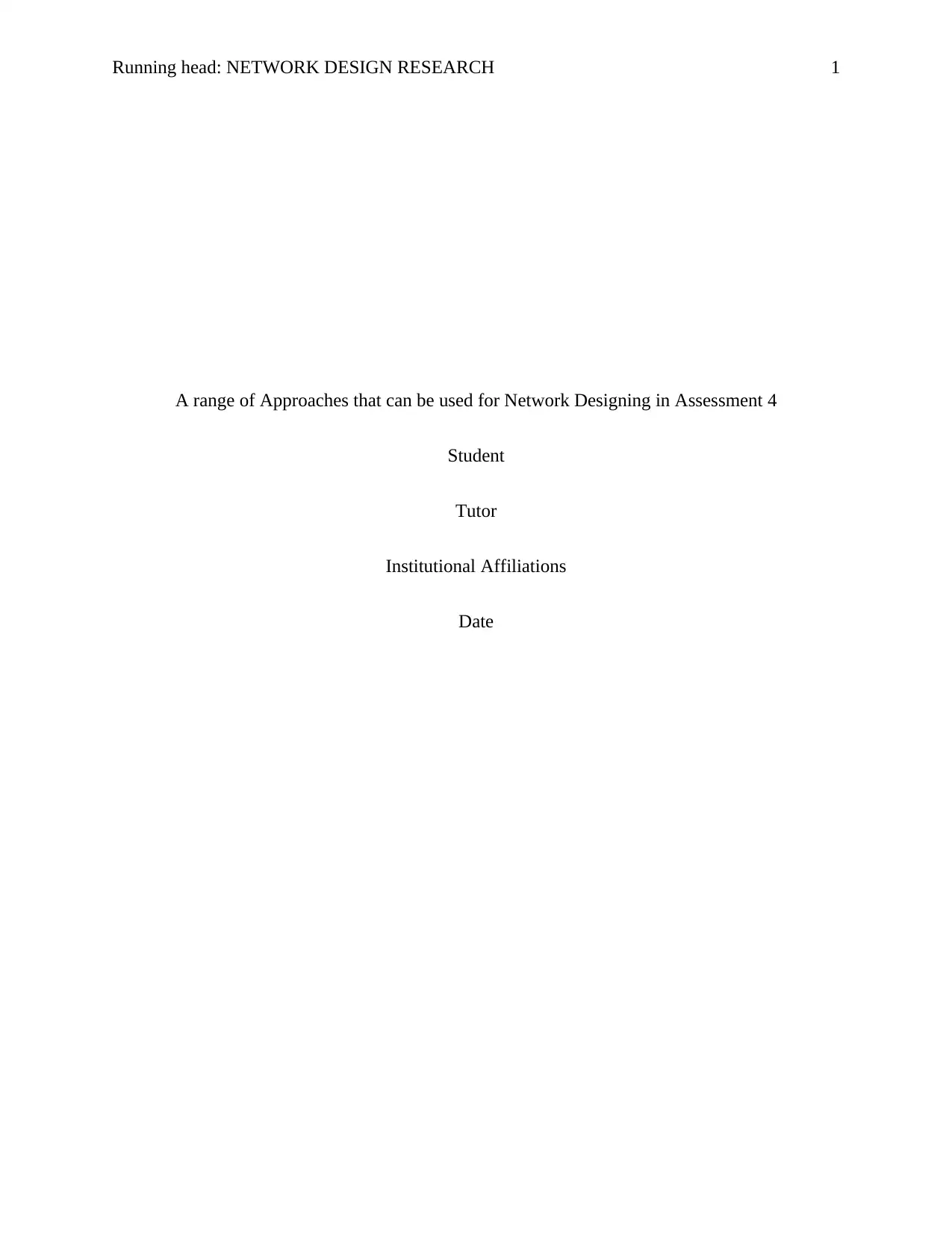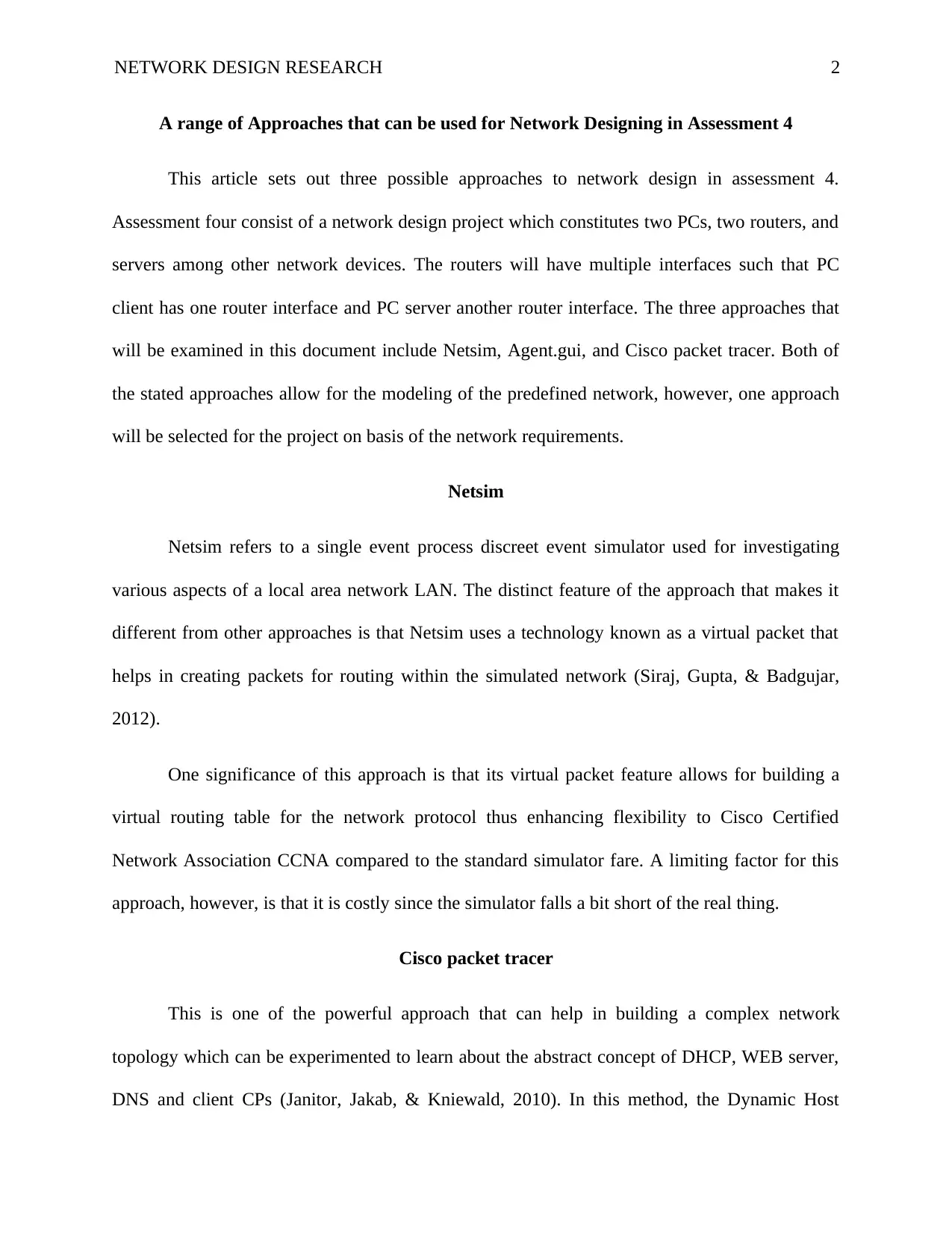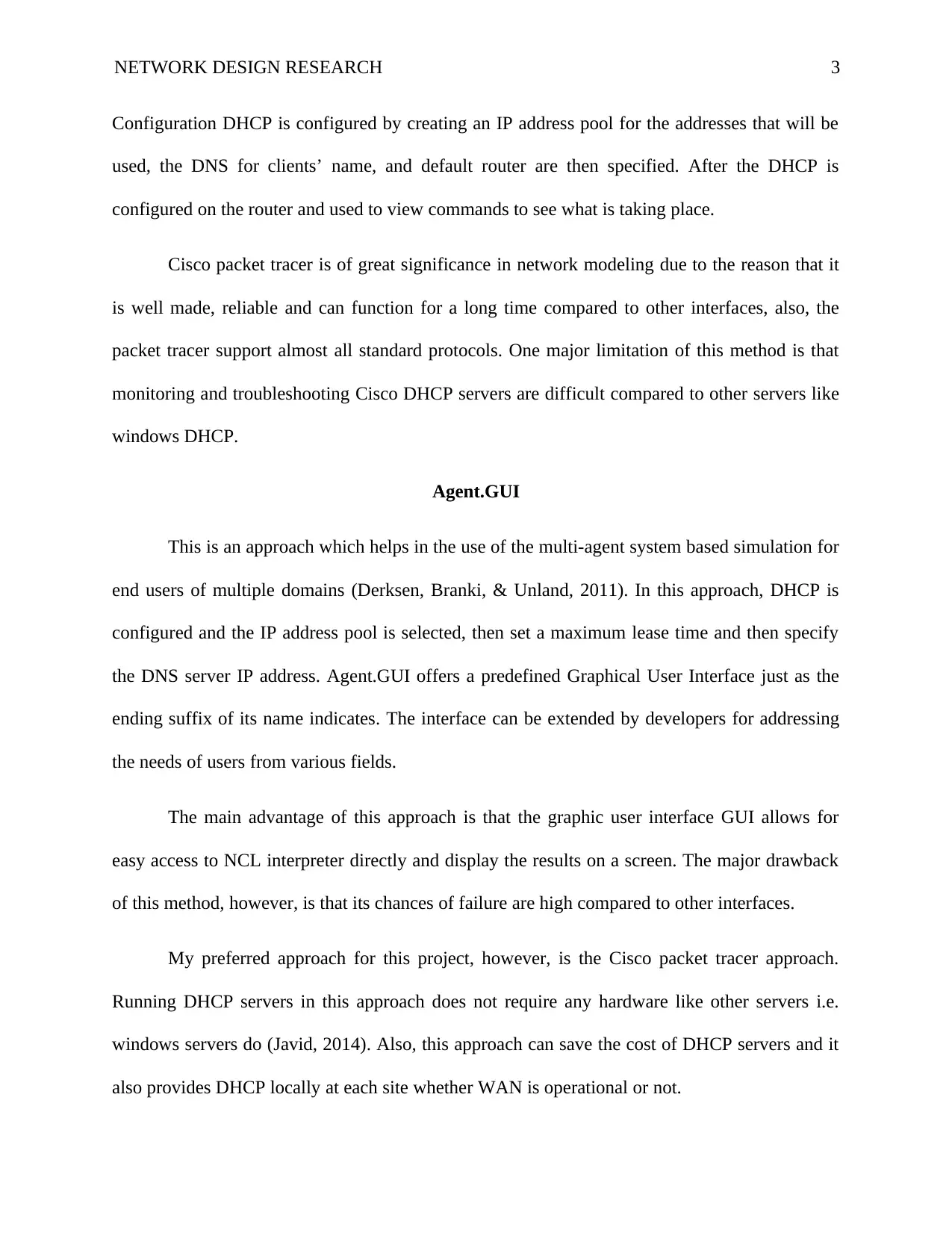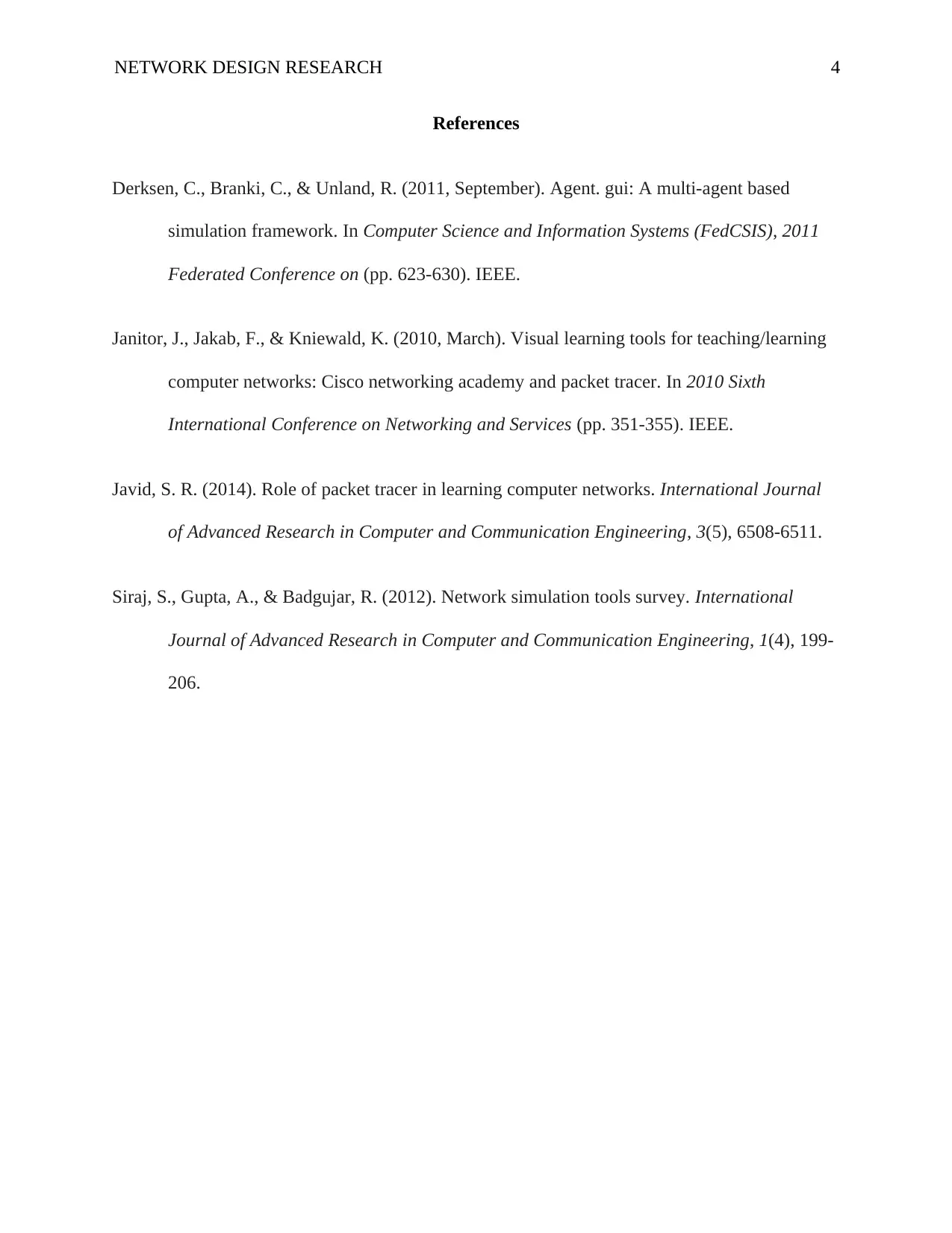A Range of Approaches for Network Designing in Assessment 4
VerifiedAdded on 2023/06/08
|4
|862
|101
AI Summary
This article examines three possible approaches to network design in Assessment 4, including Netsim, Agent.gui, and Cisco packet tracer. Each approach is discussed in detail, highlighting their advantages and limitations. The preferred approach for the project is also identified.
Contribute Materials
Your contribution can guide someone’s learning journey. Share your
documents today.
1 out of 4










![[object Object]](/_next/static/media/star-bottom.7253800d.svg)